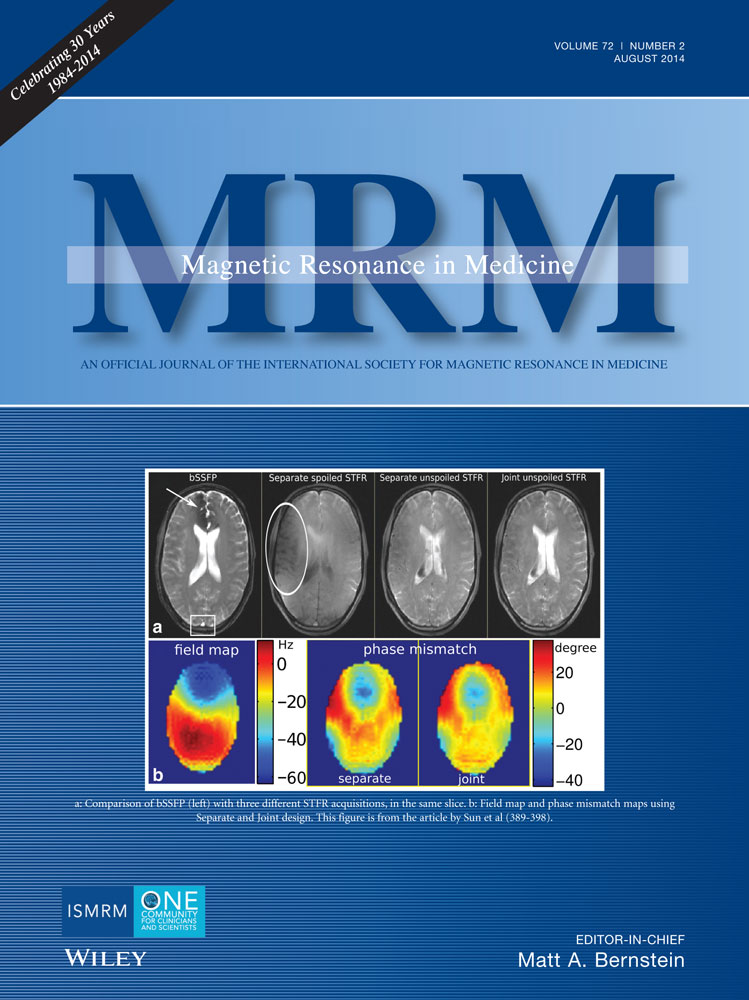Susceptibility map-weighted imaging (SMWI) for neuroimaging
Abstract
Purpose
To propose a susceptibility map-weighted imaging (SMWI) method by combining a magnitude image with a quantitative susceptibility mapping (QSM) -based weighting factor thereby providing an alternative contrast compared with magnitude image, susceptibility-weighted imaging, and QSM.
Methods
A three-dimensional multi-echo gradient echo sequence is used to obtain the data. The QSM was transformed to a susceptibility mask that varies in amplitude between zero and unity. This mask was multiplied several times with the original magnitude image to create alternative contrasts between tissues with different susceptibilities. A temporal domain denoising method to enhance the signal-to-noise ratio was further applied. Optimal reconstruction processes of the SMWI were determined from simulations.
Results
Temporal domain denoising enhanced the signal-to-noise ratio, especially at late echoes without spatial artifacts. From phantom simulations, the optimal number of multiplication and threshold values was chosen. Reconstructed SMWI created different contrasts based on its weighting factors made from paramagnetic or diamagnetic susceptibility tissue and provided an excellent delineation of microhemorrhage without blooming artifacts typically caused by the nonlocal property of phase.
Conclusion
SMWI presents an alternative contrast for susceptibility-based imaging. The validity of this method was demonstrated using in vivo data. This proposed method together with denoising allows high-quality reconstruction of susceptibility-weighted image of human brain in vivo. Magn Reson Med 72:337–346, 2014. © 2013 Wiley Periodicals, Inc.




